EDITOR’S NOTE: We’d like to welcome Joseph Kleiman of InPark Magazine to MiceChat. His new column focuses on the technical aspects of the theme park industry. Please give him a warm MiceChat welcome!
Over the past few months, a limited number of theaters worldwide have showcased The Hobbit in High Frame Rate (HFR), running at 48 frames per second (fps), twice that of conventional cinema. But the idea of high frame rates is nothing new. In fact, they continue to play daily at theme parks and attractions around the world.

In order to discuss the history of HFR, it’s necessary to make this a discussion of film. It should be understood that because more information is generated at a higher frame rate, with film it is best to have a frame size that captures more information. The bigger the frame, the more information captured. All of the formats mentioned here are considered large format – larger than conventional 35mm used in movie theaters. Most are 70mm, including IMAX. A few are 35mm formats that use larger frames, such as Cinerama and VistaVision.
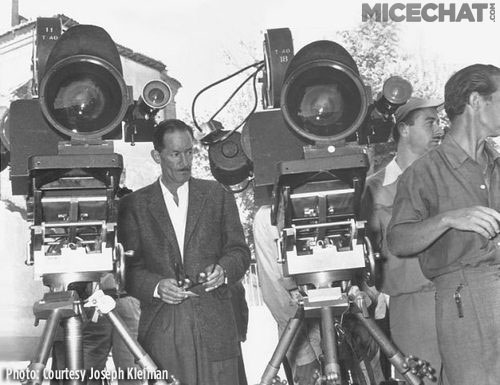
If you were to run film straight through a projector, illuminated by a bulb through a lens and onto a screen, you would get a consistent blurred streak and individual objects would be hard to discern. This is why as the film runs through the projector, a shutter is used to separate the individual images. In most projectors, the shutter flashes on each image twice, creating both a sense of motion and the idea of individual frames, tricking the brain into thinking it’s witnessing actual movement on screen rather than a series of individual images.
Early filmmakers during the silent era determined that 12fps was the minimum speed necessary to give the illusion of motion. When sound was introduced, it was determined that 24fps was the minimal speed that allowed for sound to be synced with image. This 24fps has remained the standard since The Jazz Singer (1927). When digital cinema was introduced, this frame rate was carried over so as to allow easy “printing” of the same film in both digital and 35mm from the same intermediate print.

Of the eight major widescreen formats that became popular in the 50’s and 60’s, two ran films at high frame rates. Cinerama originally ran in a 3-strip format, with three 35mm prints, each having a frame 150% the height of a conventional 35mm frame, screening next to each other and creating a single widescreen image. All of the 3-strip Cinerama documentary films were shot and projected at 26fps. But when it came time for the final two 3-strip films to be produced, the Hollywood features The Wonderful World of the Brothers Grimm and How the West Was Won (both 1962), the filming speed was reduced to the standard 24fps.
Another system of the era, Todd-AO, shot its first two films, Oklahoma! (1955) and Around the World in 80 Days (1956) at 30fps. However, the producers realized the need to distribute their films to conventional markets as well. Oklahoma! was shot with two cameras – one a Todd-AO, and the other a 35mm Cinemascope running at 24fps. Around the World in 80 Days took a different approach. For some scenes, two Todd-AO cameras were used for filming, one at 30fps and the other at 24fps. For others, the scene was shot twice, with the same camera running each time at the different speeds. All further Todd-AO productions were shot at 24fps.
The reason Todd-AO and Cinerama decided to switch to 24fps was to enable a reduction print to be shown in 35mm film houses at that lower frame rate. When film is shot at high speed, such as 26 or 30fps, and played back at a lower speed, like 24fps, the action will appear to be in slow motion. However, if a filmmaker can master film speeds, it can result in incredible effects.
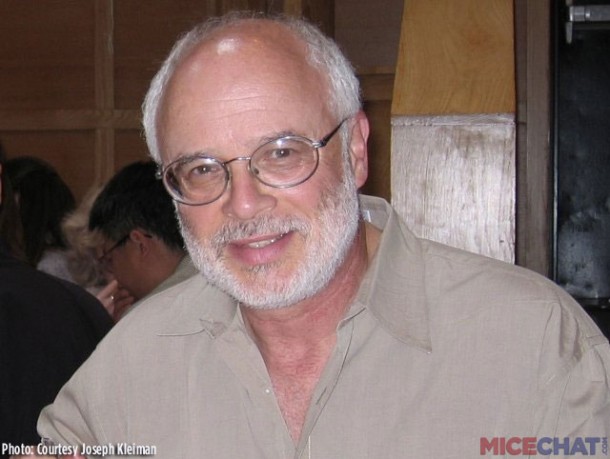
Chris Reyna, a leading expert on image technology for cinema, was the Imaging Producer on the recent art house hit Samsara (2012) and told me this about varying camera speeds: “I have been involved with Ron Fricke and Mark Magidson [director and producer, respectively of Baraka (1992) and Samsara] . . . for over 30 years. Baraka like Samsara was shot for a 24fps release exclusively. But both films used various formulas for timelapse shots, as well as many other undercranked and overcranked camera speeds to get the temporal and creative looks Ron & Mark were looking for. Shooting speeds ranged from 2fps up to 48fps to create everything from speeded-up (pixelated) to slow motion looks. But…it was all intended to be shown at 24fps.”
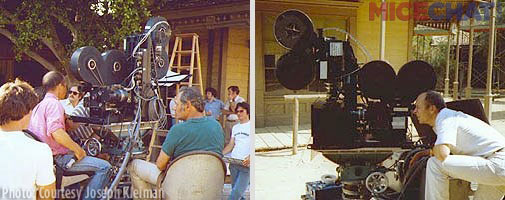
Another filmmaker who took great advantage of varying film speeds was Murray Lerner. Two of his pioneering works were the 3D films Sea Dream (1978), produced for Marineland of Florida, which also played briefly at Knott’s Berry Farm, and Magic Journeys (1982), an opening day attraction at Epcot Center. As he mentioned to my friend, the late Ray Zone in the book 3-D Filmmakers: Conversations with Creators of Stereoscopic Motion Pictures:
“One third of Sea Dream was slow motion at 96 frames a second. It doesn’t look like that a lot of the time because things move so fast. Some sequences we actually shot at 360 frames a second, like the snake striking out, the Frisbee, and the porpoise leaping through the hoop at the camera.
“Slow motion can make a tremendous difference in 3D . . . When we did Magic Journeys, I pushed very hard for slow motion. It was a big task on Disney’s part, and we did get the film running up to 72 frames a second.”
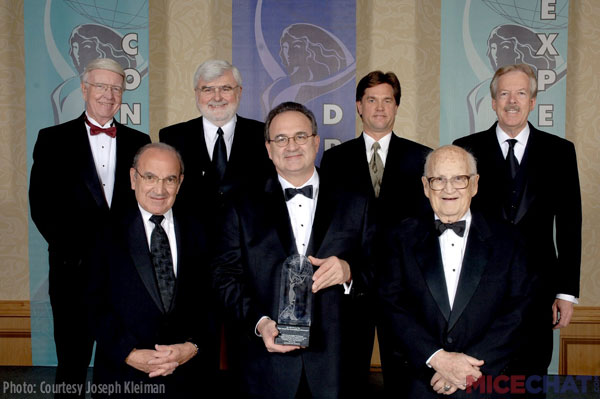
When film is shot at a high frame rate and projected at the same rate, artifacts such as motion blurring begin to disappear and the image on the screen gets closer to approximating what we as humans see in the real world. The camera and projection technicians at Disney, including Bob Otto and Disney Legend Don Iwerks (Ub’s son) knew this well. Of the 125 different projection systems they designed for and installed at Epcot Center, many of them ran at 30fps, including Universe of Energy, Symbiosis, and Magic Journeys (all 1982). Iwerks would also design a 30fps projection system for Star Tours (1987) before joining with Disney executive Stan Kinsey to form their own company, Iwerks Entertainment. Their new company worked on many 30fps projectors for theme parks, world’s fairs, and museums. One of their greatest achievements were the six synchronized 70mm projectors, all at 30fps, used on Universal Studios’ Terminator 2 3D: Battle Across Time (1996).

Earlier in Universal’s history, special effects expert Doug Trumbull was directing the IMAX film for Back to the Future: The Ride (1991). Chris Reyna was the Technical Director on the project and the two were trying to get the green light to shoot and project the film at 30fps. But due to additional costs that would have been incurred, the idea was shot down. IMAX films, with a frame three times the size of conventional 70mm and nine times 35mm, would continue to run at 24fps until 1992, when at the world’s fair in Seville, Spain, IMAX introduced IMAX HD, running at 48fps. When the fair ended, its film, Momentum, was only shown in a handful of theaters due to the limited number of IMAX projectors able to run at this speed.
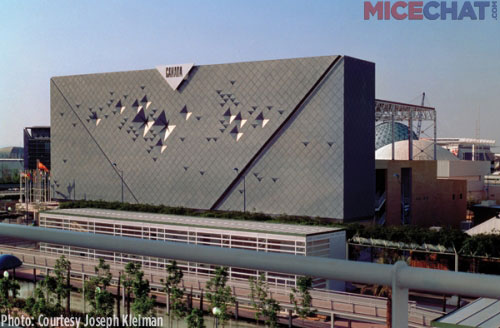
The recent IMAX screenings of The Hobbit at 48fps were all on IMAX digital projection systems. To run the movie in IMAX 3D at this speed on film would be impractical. A single second of IMAX HD film is about eleven feet long. With two prints needed (one for each eye), this amounts to a little more than 42 miles of film. On top of that, four platters, each 12 1/2 feet wide, would be needed just to hold the film. IMAX HD proved more practical for attractions and returned in a shorter form as part of the ride Galaxy: Asteroid Adventure (1994) at the Phantasialand theme park in Germany and later as the film format for Soarin’ Over California (2001).
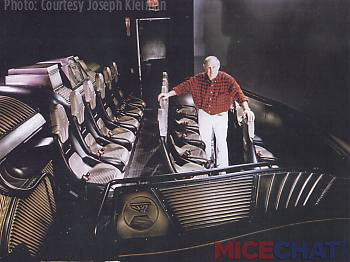
Doug Trumbull also devised systems that worked at 48fps. His Ridefilm motion simulator, which premiered at the Luxor resort in Las Vegas, featured a 48fps VistaVision film that was projected onto a 180 degree screen. The Luxor ridefilm, Search for the Obelisk (1993), was the first of a three-part journey that told a complete story through the use of cinematic and in-theater effects. It’s likely that the second part of the journey, titled LUXOR LIVE (1993) is the one that best showcased Trumbull’s talents. It incorporated video projection, a 3D film running at 48fps, and live actors interacting with a rear projected Showscan film. Showscan is a 70mm film format introduced by Trumbull in 1984 that runs at an astounding 60fps. Showscan was also used at a number of expos, including two fixtures at Vancouver’s EXPO 86, and simulator attractions, including one of the first large scale simulator rides, Toronto’s Tour of the Universe (1985).
This is by no way a comprehensive overview of HFR. There are many more formats, films, and attractions not mentioned. As cinema projection progresses to digital and limitations of film are removed, higher frame rates will become the norm. Already, numerous attractions exist whose digital projectors are showing images at 30, 48, and even 60fps. Digital cinema technology is often dictated by its close cousin, the consumer electronics market. As OLED and ULTRA HD televisions come on the market, films will be shot at ever higher frame rates to maximize these home viewing technologies. James Cameron will shoot his next Avatar film at 60fps, while Doug Trumbull’s latest venture, Showscan Digital, can film at 120fps and then reduce the frame rate to as low as 24fps, while maintaining the feel of HFR. All thanks to new digital technologies.
The Hobbit in HFR was an experiment at running a Hollywood tent pole film at high frame rate through a digital projection system. It was the first major feature to be shown in HFR in almost sixty years. And the way things are looking, it’s far from being the last.


You must be logged in to post a comment.